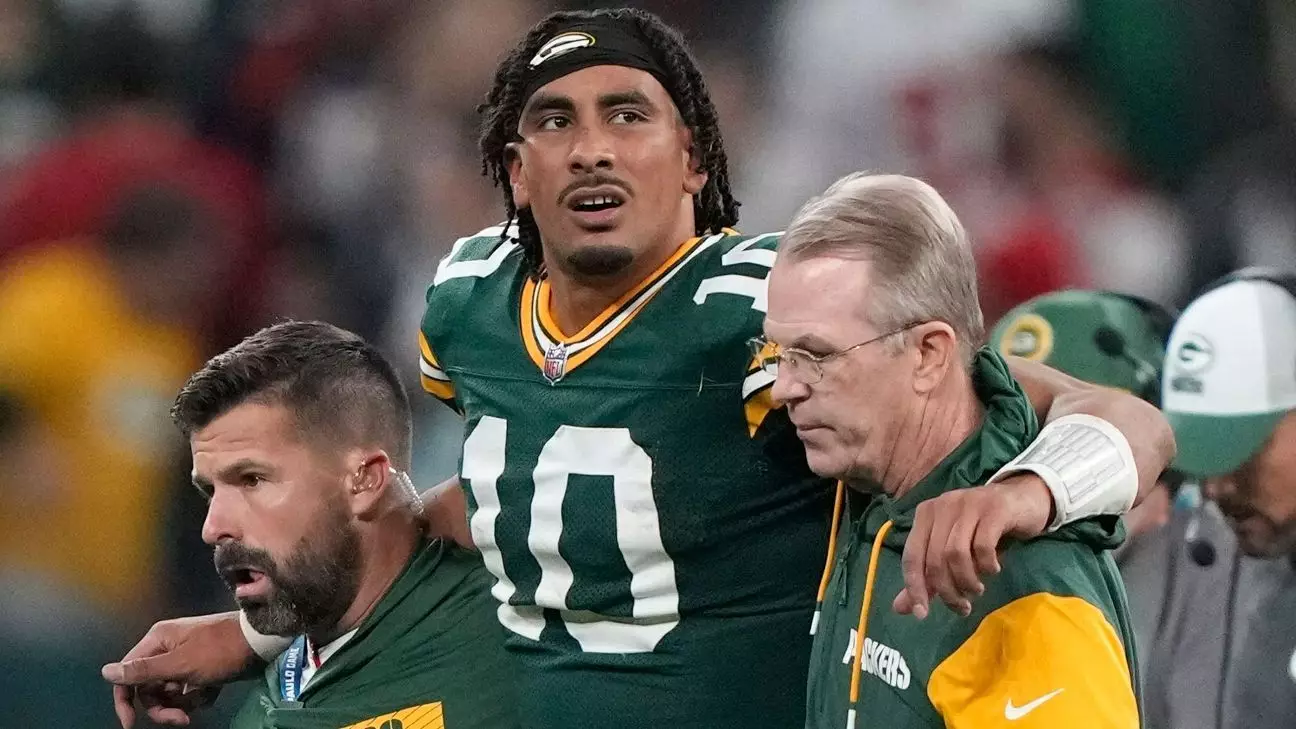In the fiercely competitive world of the NFL, athlete resilience is often tested. One of the latest examples arises from the Green Bay Packers’ quarterback, Jordan Love, who is navigating a come-back from a knee injury sustained in the season opener. After being sidelined for twelve days, Love’s return to practice suggests he could soon rejoin his team on the field – a crucial development for both his career and the Packers’ season aspirations.
Setbacks and Comebacks
Love’s journey has been fraught with challenges since the onset of the season. Initial predictions following his injury hinted at a lengthy absence, with medical experts speculating on a recovery period of up to a month due to a sprained MCL. However, the nature of professional sports often mandates that players push the boundaries of recovery timelines, especially when their teams depend on them. After missing only one game—during which rookie Malik Willis took the reins as quarterback—Love is adamant about reclaiming his position.
His determination is palpable, as evidenced by his appearance at Wednesday’s practice. Sporting a protective brace that enveloped much of his leg, Love participated in drills, giving fans and coaching staff alike hope for his imminent return. Coach Matt LaFleur’s reluctance to disclose the extent of Love’s participation speaks to the delicate balance between preparation and ensuring athlete safety.
While Love is making strides on the practice field, the transition from practice to actual gameplay is nuanced. Simply returning to the practice squad is not an assurance of a game-day readiness. As Love notes, “there’s just nothing like when it’s live bullets.” The adrenaline, pace, and physicality of a live game can evoke a different kind of pressure, one that cannot be replicated in practice drills. It’s this acknowledgment of reality that underscores both his humility and awareness of performance dynamics in the NFL.
Medical clearance remains a pivotal hurdle, and Love recognizes the importance of feeling secure in his mobility before stepping back into a high-pressure environment. His comments regarding practice reps indicate an understanding that the journey to recovery is not solely physical; it’s also mental.
Meanwhile, Malik Willis, who stepped in as a substitute, has emerged as a pivotal part of the conversation surrounding Love’s return. Despite his own challenges—having limited opportunities to execute a broader range of plays during the Colts game—Willis remains focused. His attitude exemplifies the unselfishness often required of teammates in sports, highlighting that while competition against each other is a factor, team success remains the primary goal. Willis’s acknowledgment of Love’s recovery and his preparedness to continue adapting to different play books indicates camaraderie and respect amidst competition for the starting position.
LaFleur finds himself in a challenging yet familiar position: juggling the trained minds and skill sets of both quarterbacks to optimize team performance. This situation elucidates the strategic intricacies coaches face, having to balance player readiness with broader team tactics as they transition from practice to a competitive game. The struggle to prepare both quarterbacks while maintaining team morale encapsulates the multifaceted responsibilities of coaching at high levels within the NFL.
Looking ahead, there is much at stake for the Green Bay Packers as they contemplate their ongoing season. The prospect of Love’s potential return not only impacts his career trajectory but also bears implications for the team’s strategic direction moving forward. The balance of skills, resilience, and teamwork portrays a critical narrative within the sports arena—one where every individual contribution matters in the greater scheme. As the Packers prepare to face the Tennessee Titans, all eyes will be on Love, both for his performance and his remarkable journey of resilience.


Leave a Reply